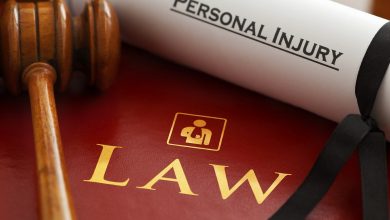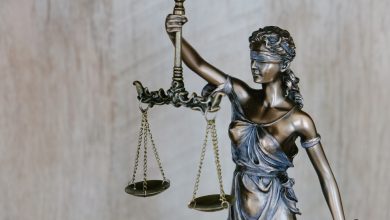Search Warrant Requirements and Examples

The debate over what constitutes a lawful search and seizure has been ongoing in the United States for over 100 years. To help protect citizens from unlawful search and seizure, the Fourth Amendment specifically addresses this issue. Below, we’ll go through the requirements for search warrants and provide examples of both lawful and unlawful searches.
What is the Fourth Amendment?
The Fourth Amendment to the U.S. Constitution provides the following:
The right to be secure in their persons, houses, papers, and effects, against unreasonable searches and seizures, [these rights] shall not be violated, and no warrants shall issue, but upon probable cause, supported by oath or affirmation, and particularly describing the place to be searched, and the persons or things to be seized.
What the Fourth Amendment is saying is that people have the right to their privacy unless there is probable cause. So now the question becomes, what constitutes probable cause?

What is Probable Cause?
Before the police can obtain a warrant, conduct a search, or make an arrest, they must have probable cause, as provided by the Fourth Amendment. But while the Fourth Amendment provides this right, it fails to define precisely what probable cause is. Due to this lack of a definition, it became up to the courts to decide for themselves.
A court will typically agree that there is probable cause in the case that there is a reasonable belief that a crime was committed or for when evidence of the crime was visible at the time of search or arrest.
Illinois v. Gates
In 1983, the Supreme Court favored a more lenient opinion of probable cause in the case of Illinois v. Gates.
The events leading up to the case began May 3, 1978, when the Bloomingdale, Illinois police department received a tip in a letter about a couple, Susan and Lance Gates, that was taking part in a drug-smuggling operation. The wife’s job was to drive down to Florida to pick up the drugs. Her husband would then fly down and drive the car back. According to the tip, the couple had a hoard of drugs in their basement worth more than $100,000.
Police were able to track down the husband’s next flight and monitored his activity as he picked up and drove the car back to Illinois. At that time, a request for a search warrant at the couple’s house was requested and granted. When the couple arrived back home, the police were waiting.
Large amounts of marijuana were discovered in both the car and their house, and the couple was arrested.
However, the Illinois Circuit Court ruled that the affidavit and letter the police received as their tipoff was not enough to qualify for probable cause. The case was then brought up to the Supreme Court for a final ruling.
The question at hand was whether a judge could hand out a search warrant with only an unidentified informant’s tip.
The Supreme Court overruled the Illinois court and stated that the Gates’ Fourth Amendment rights were not violated.

Unlawful Search and Seizure
If law enforcement does not have a search warrant or probable cause, performing a search and seizure would be unlawful. Any evidence uncovered in an unlawful search and seizure is not valid in court.
Certain courts, though, have varying interpretations of what constitutes a lawful search and seizure, considering whether a warrant was necessary or if probable cause was reasonable to assume. If someone believes their Fourth Amendment rights have been validated, they can appeal to a higher court for a new decision.
Fourth Amendment Landmark Cases
Below are seven of the most significant U.S. Supreme Court decisions involving search and seizure rights.
Weeks v. United States
One of the first tests of the Fourth Amendment came in 1914 and involved a search and seizure that went underway without a warrant.
Rewind to 1911, when Freemont Weeks was arrested at the train station in Kansas City, Missouri, where he worked. Weeks was arrested under suspicion that he had been using his employer’s mail to send out lottery tickets.
After the arrest, police searched his house without a warrant using a hidden key identified by a neighbor. The police then turned over some of their findings to U.S. marshals. Police and the marshals came back to the house the next day, again without a warrant, and found more letters that they confiscated and used to convict Weeks.
Without a search warrant, this case was a layup for the United States Supreme Court, which unanimously ruled that Weeks’ Fourth Amendment rights were violated. They stated that acquitting a guilty party was more desirable than breaching the Constitution.
Mapp v. Ohio
The year is 1957 and 34-year-old Dolly Mapp finds herself intertwined with a mob boss named Shondor Birns. Birns had been the king of organized crime in Cleveland, Ohio for the past two decades and specialized in illegal gambling.
In the spring of 1957, police received a tip that counterfeit betting slips and equipment used for a con game was present at Mapp’s house.
Three officers were dispatched to the house and asked if they could come inside. Mapp refused. Two policemen left, while one stayed across the street and watched the house.
About twelve hours later, the police came back in force. Four cars packed with police officers came to the house and knocked. There was no answer. In response, the police broke down the door.
Mapp asked to see a search warrant, and a piece of paper was presented to her. Mapp snatched the piece of paper and put it in her clothing. Police proceeded to struggle with Mapp to get the paper back and did so successfully. Mapp and her lawyer never saw the contents of the piece of paper throughout the proceedings.
The search throughout the rest of the house continued, and Mapp was placed in handcuffs for her behavior. Betting slips were found in the house, along with a gun and a couple of pornographic books.
When asked, Mapp claimed that the books were left by a prior tenant. She was arrested and charged with a misdemeanor for the betting slips. However, she was acquitted of the crime.
Mapp was later asked to provide testimony against mob boss Shondor Birns, and she refused. The court then put Mapp on trial and she was found guilty for her possession of the pornographic books, which were against the law in Ohio at the time. Despite the prosecution failing to provide a search warrant, Mapp was convicted and sentenced up to seven years in jail.
In response, Mapp appealed the case to the Ohio Supreme Court, which held up her conviction.
So next, she appealed to the United States Supreme Court.
On June 19, 1961, Mapp’s conviction was overturned in a 6-3 decision.

Katz v. United States
Six years after Mapp v. Ohio, the U.S. Supreme Court ruled on another Fourth Amendment case in Katz v. the United States.
Charles Katz was a sports betting handicapper who specialized in betting on college basketball. The FBI started to covertly investigate Katz by using a hidden wiretap device placed on a telephone booth near his home. Using the wiretap, the FBI recorded a conversation in which Katz communicated his wagers to bookmakers across state lines.
Katz was arrested on interstate betting charges. But at trial, Katz’s attorney argued that the wiretap was unconstitutional, as it was placed in an area that should be protected by the Fourth Amendment. Further, the authorities had not received a search warrant in advance of placing the devices. The judge disagreed, though, and Katz was convicted.
By 1967, the case had made its way to the Supreme Court. The court ruled in favor of Katz in a 7-1 decision and overturned the conviction.
The decision was significant because it expanded on the breadth of rights allowed by the Fourth Amendment. Previously, the Fourth Amendment had only applied to a person’s belongings, their house, and papers. But the court argued if a person wants to go to a private area in public, that area should be protected by the U.S. Constitution.
Terry v. Ohio
The case of John W. Terry v. State of Ohio was decided the following year in 1968. This ruling was incredibly significant because it extended the immunity of violating the Fourth Amendment’s search and seizure provision to police officers that had a reasonable reason to believe that a person could be armed and dangerous. In those cases, the police would be allowed to frisk someone on the street without probable cause for an arrest.
The details of this case revolve around the “stop and frisk” policy, which police had been employing at the time for many years without the courts commenting.
While this policy was finally addressed in 1968, the origins of the case go back to Cleveland, Ohio, in October of 1963, when a police officer noticed two individuals loitering on a street corner. One of the men, John W. Terry, walked in front of a store and paused to look into a window. This was followed by the second individual mimicking the same actions. Soon after, a third man joined them in walking past the store and pausing at the window.
The now suspicious police officer deduced that the three were casing the storefront to prepare for a robbery, so he confronted the men. After asking for their names, the policeman turned the men around and patted them down, discovering handguns. Terry and his partner, Chilton, were arrested.
At their trial, Terry’s attorney argued that the frisking was a violation of the Fourth Amendment. The judge disagreed and Terry was convicted. The District Court of Appeals confirmed the conviction, and the Ohio Supreme Court declined to listen to the case. Finally, the case was brought in front of the U.S. Supreme Court, which ruled 8-1 in favor of the “stop and frisk” policy being constitutional as long as there was “reasonable suspicion” that a crime was going to be committed.
The court’s rationale was that the protection of unlawful search and seizures was meant to protect evidence from being unlawfully obtained. This did not apply, in the court’s mind, if the search and seizure was meant to prevent a crime from happening.
New Jersey v. T.L.O.
We fast forward to 1985 for the next case, which takes part in the surprising setting of a high school.
The story begins with a scene that could be out of a movie, as a teacher at the Piscataway High School catches a freshman and her friend smoking cigarettes in the bathroom.
The teacher then brings the two students to meet with the assistant vice principal. The freshman in question, known as TLO in the case, denies the teachers accusations and asserts that she does not even smoke.
The assistant vice principal then demands to see her purse and discovers a pack of cigarettes. But he also discovers rolling papers, marijuana, a large amount of cash, and a list which seemed to show students that owed money to TLO. In addition, there were two notes which insinuated that TLO was supplying marijuana to students.
The girl’s mom was called, along with the police, and the mother drove her daughter to the police department voluntarily. She was arrested and convicted of selling drugs, which led to a fine of $1,000 and her expulsion from school.
The case was brought to the United States Supreme court, which ruled 6-3 in favor of the state. The court asserted that it was reasonable to search TLO’s purse to determine if she was being truthful about smoking and breaking a school rule. When drugs and other evidence were found, those items were in plain view, which is an exception to the rule requiring a search warrant.
Veronia School District v. Acton
Sticking with the school theme, but ten years later in 1995, the case of Veronia v. Acton used the ruling in New Jersey v. T.L.O. to arrive at their decision.
Drug use in the Veronia School District was peaking in 1989, and disciplinary action was rapidly becoming more necessary. The district attempted to remedy the situation by hosting speakers, presentations, and classes highlighting the dangers of drugs. The district went as far as to bring in drug-sniffing dogs to the schools, but the drug use did not decline as a result.
After consulting with parents, the district decided to create a drug testing program for student athletes. In order to participate in athletics, you must adhere to the program. Students were tested at the start of the season, and ten percent of athletes were randomly selected each week to submit drug tests.
By 1991, the policy was still in place. A seventh-grader named James Acton was refused from participating in sports because he and his parents would not sign the drug testing consent form.
The Acton family then sued the school district. A district court agreed with the school district, but an appellate court overruled the decision, saying that the school district violated both the Fourth and Fourteenth Amendments.
On March 28, 1995, the case was ruled on by the United States Supreme Court. The court upheld the decision, stating that random drug testing taking place in public schools did not violate the Constitution.
Safford Unified School District v. Redding
The most recent landmark example of a Fourth Amendment ruling came in 2009.
We continue with the school theme, this time concerning Savana Redding, a 13-year-old middle school girl. Redding was brought to the assistant principal’s office, where she was shown a day planner containing knives and contraband. The assistant principal asked if this was Redding’s day planner, and she replied yes, but her friend had borrowed it, and the contraband was not hers.
The assistant principal then showed her four high strength pain relief pills, which were not allowed in the school without prior authorization. Redding was asked if these were hers because there were reports that she was distributing the pills to students at school.
She denied the accusation and offered for her backpack to be searched. When nothing was found, Redding was brought to the school nurse for a more thorough search. Redding was asked to remove the top layer of her clothing. She was asked to partially remove her bra and shake it out and to expand the elastic of her underwear. Nothing was found.
In the aftermath, Redding’s mother filed a lawsuit against the Stafford school district, claiming that her daughter’s Fourth Amendment rights had been violated. The defense claimed that qualified immunity was in place for the school district, and a district court agreed, seeing no violation of the Fourth Amendment.
But a circuit court disagreed and reversed the decision. They stated that a strip search was not justified and was not among the searches that courts agreed were allowed for children in the New Jersey v. T.L.O. decision. The court argued that there was enough probable cause to search Redding’s backpack and her top layer of clothing. However, the search of her underwear is where the administrators crossed the line.



